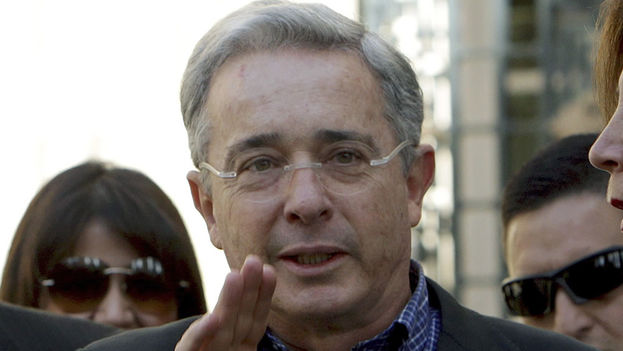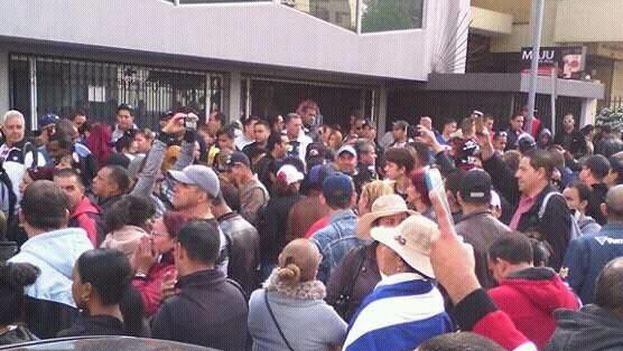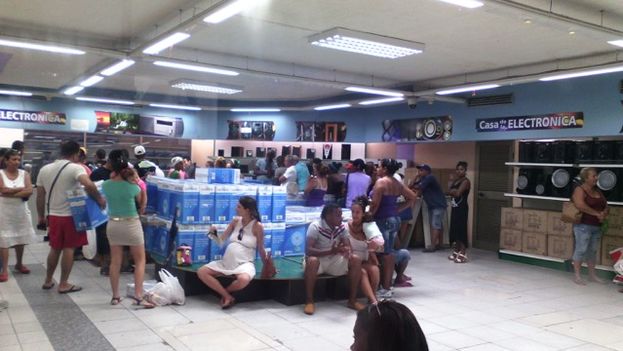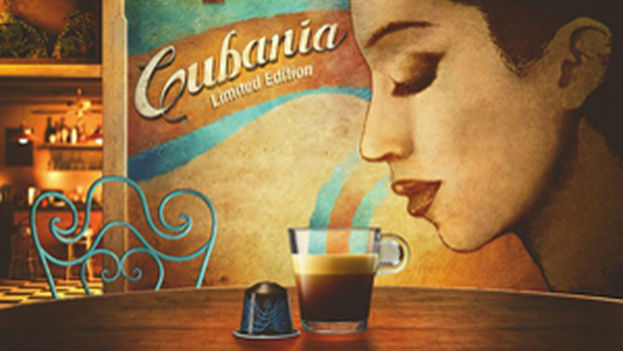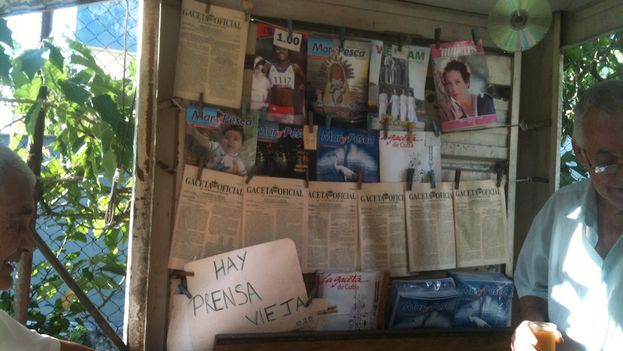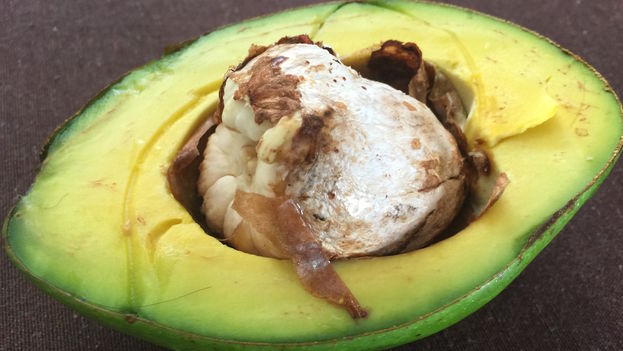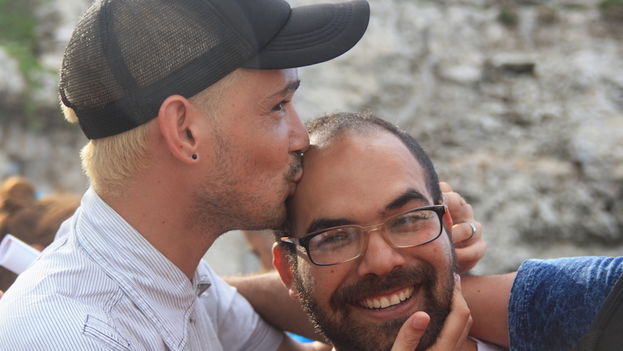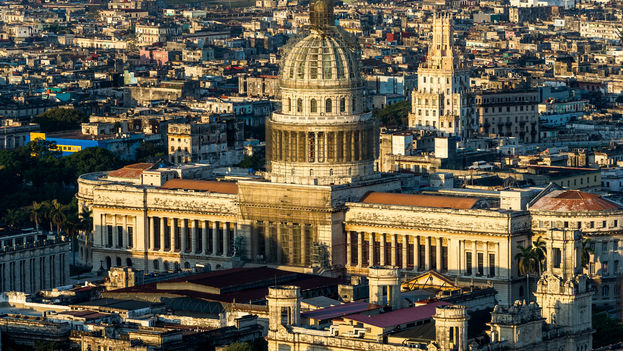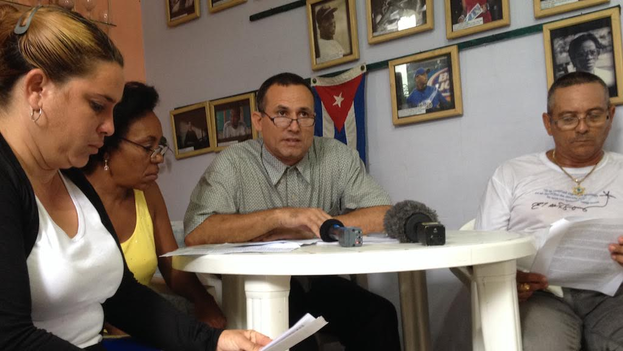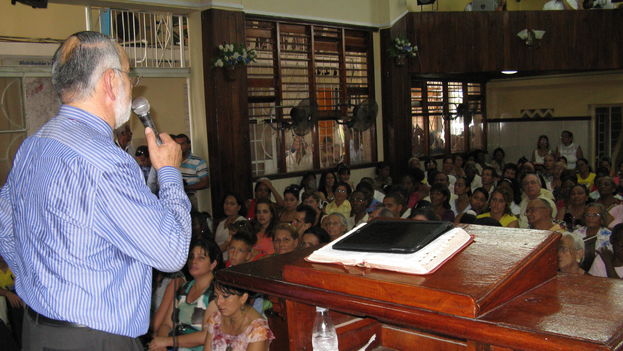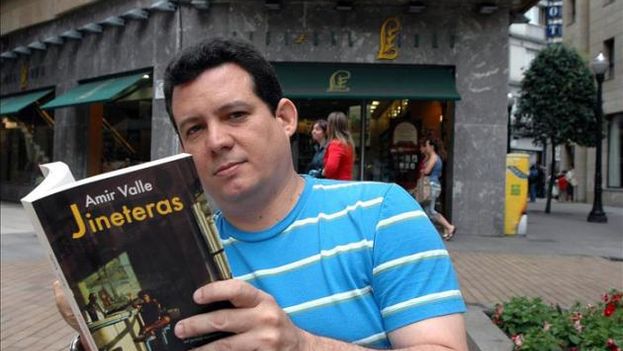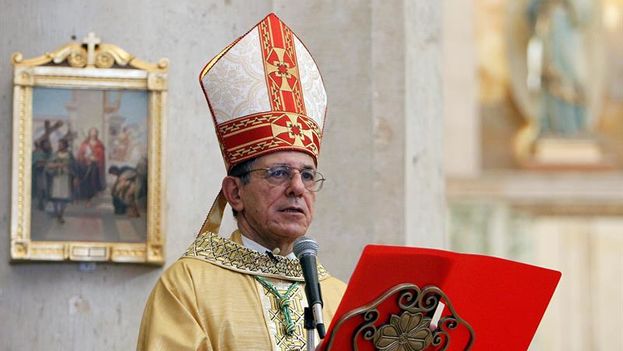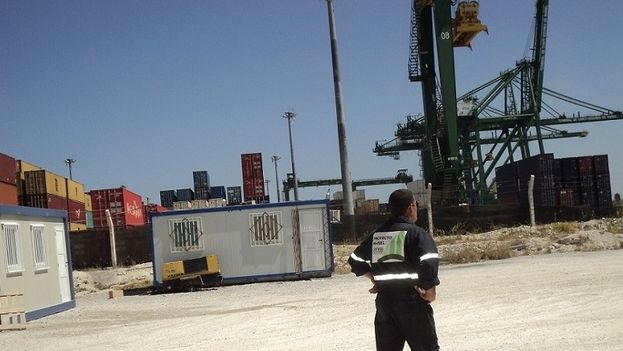14ymedio, Miriam Celaya, Havana, 29 June 2016 — About 400 Cubans who remained ensconced in front of the embassy of Mexico, in the city of Quito, Ecuador, demanding an airlift to allow them entry to the United States, were violently evicted from the place by police in the early hours of Sunday, 26th June. It was the culmination of a protest that began on Saturday 18th
Days earlier, the Mexican authorities had informed the thousands of Cubans in Ecuador that there is no possibility for its government to establish a new airlift, which leaves unresolved this chapter of the immigration crisis for the Cubans fleeing the questionable benefits of Raul Castro’s socialist model. continue reading
Mexico, through whose mediation several thousand Cubans managed to arrive in the US this year, has noted the need for a solution through “dialogue,” without specifying who would take part in it or when it would take place. It is fair to point out that Mexico is not responsible for solving the Cuban migratory crisis. During the month of May, more than a thousand Cubans in Ecuador had been mobilized for the same reason: to find a safe exit to follow their route to the US, with no results.
Some leaders in the region have attributed responsibility for the steady stream of emigrants, especially those coming from Ecuador, Venezuela and Colombia, to the existence of the Cuban Adjustment Act
As usual, the official Cuban press has stayed tight-lipped about this drama, part of that stream of refugees that continues to flow silently, as a kind of plebiscite without polls, very clearly showing how insignificant the performance of their government is to Cubans and where their real hopes for the future reside.
While the Cuban government remains mute and deaf, Cubans continue to invade the forests of South and Central America or to defy the Gulf Stream on rickety boats in the unpredictable waters of the Florida Straits to reach US territory, spraying the Cuban crisis throughout the entire regional geography.
Much has been argued about the causes of the current Cuban migration. Following the crisis sparked last April by the constant arrival of Cubans in Costa Rica and the closing the Nicaraguan border, which caused a traffic jam of refugees and strong diplomatic frictions between the governments of Central America, some leaders in the region have attributed responsibility for the steady stream of migrants, especially those coming from Ecuador, Venezuela and Colombia, to the existence of the Cuban Adjustment Act
Some analysts, while deploring the preferential treatment of US authorities towards Cubans arriving in their territory, have indicated that the fears among Cubans that the Act will be repealed after the restoration of relations between the governments of the US and Cuba is the main source of such a constant and increasing exodus.
The preferential treatment includes immediate legal protection and access to the Federal Program for Refugee Resettlement, thanks to the 1980 amendment of the Cuban Adjustment Act. In addition, in just over a year, most get their permanent residence, regardless of their reasons for leaving Cuba.
Other migrants are returned to their countries of origin, despite the real violence of the situations they suffer in their countries, related to wars or drug trafficking
In contrast, migrants from South and Central America, Mexico, and elsewhere, are returned to their countries of origin when they are caught, either at any of the border crossings or by immigration authorities within the US, despite the real violence of the situations they suffer in their countries, related to wars or drug trafficking, criminal gangs linked to drug cartels, murder, kidnapping, the aftermath of the guerrillas, paramilitaries, poverty and other situations that Cubans within the Island do not endure.
The Adjustment Act has thus been turned into the alleged determining cause—and, therefore, the obstacle to eliminate in solving the problem of migration from Cuba—when the real causes for the Cuban exodus are the hopelessness, the absence of opportunities, the generalized poverty and the failure of the “revolutionary project” of Castro-communism.
In fact, the government’s economic program stemming from the VII Congress of the Communist Party of Cuba under the guise of the documents Conceptualization of the Cuban Economic and Social Development Plan and National Economic Development and Social Plan until 2030, are, all by themselves, a stronger incentive for the national stampede than a hundred Adjustment Laws.
However, to focus the discussion of the migratory drama in the search for the alleged responsible villain, be it the Cuban Adjustment Act or the olive-green caste enthroned in power, not only masks and delays the solution of the problem, which undoubtedly is in the hands of Cubans themselves, but diffuses the explanation of the basic issues, which are not the mere existence of a particular foreign law that rules the personal future of émigrés from the island, but the fundamentals of the existence of a dictatorship in Cuba that has dominated the destiny of a nation for over almost 60 years, largely thanks to the acquiescence of Cubans themselves.
It is, therefore, about a vicious circle that seems to not have an end, because, though the main cause of the Cuban exodus is a situation resulting from a suffocating, long-lived dictatorship that nullifies the individual—and not a law enacted 50 years ago by a foreign government—it is Cubans’ incredible capacity for tolerance that has allowed the survival of the system to date that drives them to look for their future beyond the horizon.
It is the Cubans’ incredible capacity for tolerance that has allowed the survival of the system to date that drives them to look for their future beyond the horizon
The mobilizing ability of some bargain-basement “leaders” among Cuban émigrés is extremely noticeable. They are ready to demand from foreign authorities what they were not capable of demanding from the Cuban government, and implicate in such demands significant numbers of individuals including families with minor children.
It is also hard to believe that several hundreds of Cubans can organize themselves, demand a solution to the crisis they have provoked, and prepare themselves to make statements to the press and cameras that will show their faces to the world.
Are they the same individuals who remained silently acquiescent to the abuses of power in Cuba? Are they the same ones who accepted the ideological indoctrination of their children, the ration card, the dual currency, the high prices, the most miserable wages, the blackouts, the government-sponsored marches and all the existential humiliation under dictatorial conditions?
How can so much political willpower to demand rights in a foreign land that are not theirs be explained, when they were stripped of natural rights in their own land and accepted the humiliation in fearful silence? Is it less dangerous to traverse jungles and mountains riddled with dangers and drag their people into such an unpredictable adventure than to simply refuse to cooperate with the Castro regime that condemns them to eternal poverty?
The issue deserves a thorough anthropological study of the nature of the Cuban people and the catastrophic effects of more than half a century of dictatorship, beyond any logic of solidarity with their cause or wishes for the successful outcome for the efforts of those fleeing the Island.
There are signs that also indicate how deeply the uprooting from their land has infiltrated so many Cubans. For over half a century, the Castro regime has stripped the Cuban people to such a point that a significant number of Cubans don’t even feel the impulse to defend in their own country what is theirs by birth, history and culture.
The native moral duality becomes more evident especially when it comes to seeking immediate solutions to current problems, carefully avoiding any political involvement and placing on the shoulders of others the weight of problems that are ours.
This is what is happening now, when refugees stranded in Ecuador are defining their situation as a “humanitarian crisis,” though the issue is not about groups fleeing from a war, or about the politically persecuted, or about survivors of a natural disaster, of a famine, or ethnic conflict. Paradoxically, they are making demands in countries already facing their own national crises, without the need to put up with the Cuban crisis.
Paradoxically, they are making demands in countries already facing their own national crises, without the need to put up with the Cuban crisis.
What is more, these Cuban migrants do not risk jail or death if returned to their country of origin. They even declare: “We have nothing to do with politics and we are not against the Cuban government. Our aim is to reach the U.S.”
It is about generations shaped in the philosophy of survival, brought up in permanent simulation, of “pretending to go along,” where anything goes, in a society where the principle of every man for himself reigns, so they resort to any means to reach their objective, in this case, reaching the U.S. That is why they present themselves as subjects trapped in a “humanitarian situation” that, nevertheless, they have chosen not to associate with the political situation in Cuba.
Of course, there’s no denying the humanitarian principles of support for the needy or remaining indifferent to the fact that most Cuban migrants caught in transit to the US—just like other hundreds of thousands of migrants of so many countries in the region—lack the means and resources to survive, have no access to health care and other essential social benefits, such as a secure roof, basic housing conditions, water service, appropriate hygienic food and clothing, so they depend essentially on the solidarity of others. But they have voluntarily placed themselves in that situation.
We are facing a situation which doesn’t seem to offer any short-term answers, and, in any case, whose ultimate solution depends on surmounting Cuba’s internal crisis, whose essence is markedly political, though, by their irresponsibility, the government and those governed continue to pretend to ignore it.
Translated by Norma Whiting
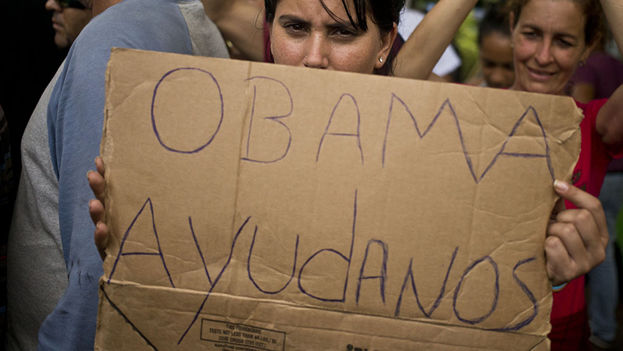
![]() 14ymedio, Eliecer Avila, Havana, 3 July 2016 – A great deal has been written in recent months about the permanent crisis of Cubans stranded in different Latin American countries. Those living outside the island and the few “connected” (i.e. on-line) within it, are certain to have read some of the news and have access to the emotional videos circulating which include ones of families with little children desperately asking for a way out that will allow them to reach the United States.
14ymedio, Eliecer Avila, Havana, 3 July 2016 – A great deal has been written in recent months about the permanent crisis of Cubans stranded in different Latin American countries. Those living outside the island and the few “connected” (i.e. on-line) within it, are certain to have read some of the news and have access to the emotional videos circulating which include ones of families with little children desperately asking for a way out that will allow them to reach the United States.
